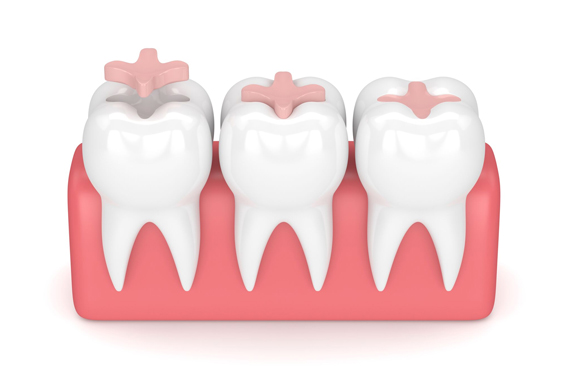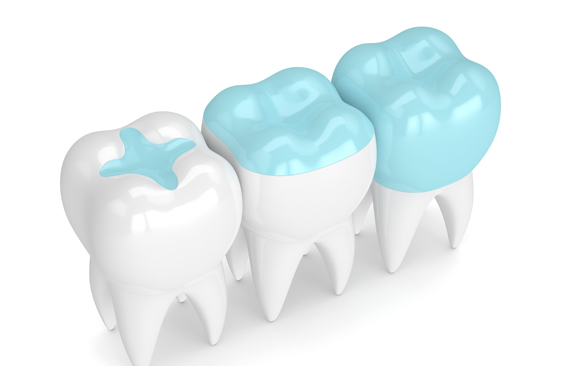What are Inlays and Onlays?
Both inlays and onlays are designed to enhance and correct your smile. Either restoration is made out of realistic-looking and durable materials, so it’s common for an inlay or onlay to last for decades before replacement is necessary. You can think of this type of restoration as a smaller crown. They’re often used on teeth that are damaged or compromised, but that don’t necessarily need a full crown.
Why might Inlays and Onlays be needed?
If a tooth has cracked or broken on the very top, it may benefit from an inlay or onlay. Rather than damage the entire tooth to fit a crown, this restoration is just as durable and smaller in size. You might benefit from this restoration if you have a large filling that needs to be replaced. Some patients request an inlay or onlay because of how durable and long-lasting they are, especially when they’re used to replace older amalgam (metal) fillings.


Who is a candidate for Inlays and Onlays?
We will examine your teeth to determine if you might benefit from either an inlay or onlay. Most patients who need this restoration can and should consider having it placed. By placing the restoration, you’re preventing further damage to the compromised tooth. You can have an older inlay or onlay replaced as it begins to show signs of wear or any damage.
What happens during the procedure to make and place Inlays and Onlays?
We begin by numbing the area where the restoration will be placed. We start by cleaning out the tooth of any old filling or decay that is present. If there’s a break or crack, this area will be smoothed before a restoration is made for you. Impressions are taken and used to make either the inlay or onlay. Inlays specifically sit inside the grooves and cusps of a tooth, while the onlay sits over the entire top of the tooth’s crown. We then place the restoration and make any slight adjustments that are needed.
If you’d like to learn more about inlays and onlays, call our office today to speak with one of our helpful and friendly staff members.
